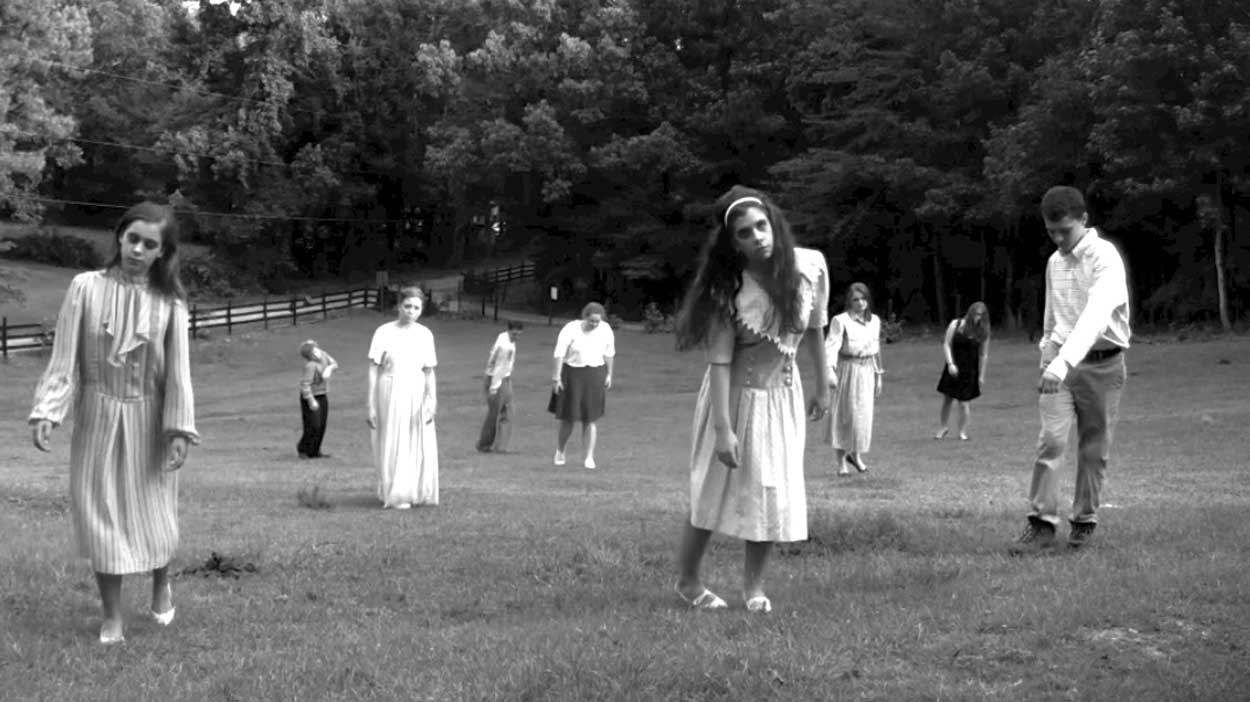
Romero’s Editing Strategies
Both editing strategies (continuity and analytical) are utilized to enhance the viewing experience for the audience. Continuity editing is used in most shots of the film but there are some analytical edited scenes spaced throughout the film as well.
The main match-on action scenes that occur during the movie are when a character would spot a zombie and you see the look of terror on their faces and then the shot switches to a clip of the zombie running towards that character to attack them. This occurs several times throughout the film as many characters are attacked. This type of editing is done to create suspense, when we see the look of horror on the character’s face then it leads the audience to wonder what they are going to see in the next scene which displays the zombies.
There was also some sparse analytical editing that occurred during the zombie attacks. The camera would show a close up of the character being attacked to make the shot more intimate and dramatic.
I think the director chose to shoot the film this way using both analytical and continuity editing because the film had a need for both. The setting plays a key role in the film as they are on a rural farm in Pennsylvania and the continuity editing shots help familiarize the audience with the setting. But the close up analytical shots help make the film more dramatic and engage the audience more.

Examples from the Film
To convey suspense and tension in the Night of the Living Dead, George A. Romero arouses expectations and subverts those expectations with uncertainty utilizing editing and sound. Around the 22-minute mark, Barbra surveys the house after a reassuring conversation with Ben. Ben’s consolation is not only received by Barbra within the parameters of the film, but Ben also consoles the audience—just enough words by Ben to put the audience at ease. As Barbra walks through a doorway, ominous music ramps up and takes away the comfort that Ben initially instills. Barbra fixates her vision towards something, using the music box as the variable for the transition. While the music box plays an innocent melody, a shot of Barbra with the music box out of focus parallels the dispatch to the audience of the focus towards Barbra.
Romero plays with the conjunction of editing and sound to convey to his audience the framework he placates. He juxtaposes the ominous theatrical music with the innocent melody of the music box. Romero constantly puts the audience in a disarray in where he simulates a roller coaster of tension subsequently subverting each other. Visually, Romero fixates on an inanimate object to impart to the audience where the focus should be. He displays Barbra focusing towards the music box and hinges conveying a tone with the object.
Oh! And Fun Fact…..
Other budget conflicts and the era in which the film was shot included shooting on a 35mm print, but only with 16mm editing equipment. The crew had to transfer all the footage to 16 mm before they could start editing it. Rousseau also notes that they rarely had time or a movie for more than one shot of any frame, and they did not have the opportunity to verify this. He had to believe that Romero was doing everything right. The sound was also mixed without seeing the picture.
Rousseau remembers the chess problem between Russell Streiner and the sound engineer in the laboratory. If Russ wins a chess game, they will receive a sound mix for free, but if he loses, they will have to pay twice as much. Some of the cast and crew watched the game, which Russ eventually won.
